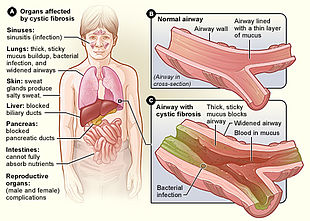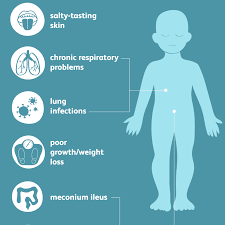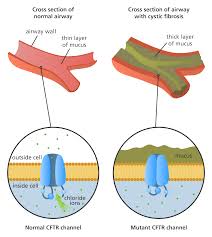Cystic Fibrosis: A Sticky Situation
March 7, 201919 Views
You may be wondering, what is Cystic Fibrosis? You’re probably not but I’ll tell you anyway. Cystic Fibrosis is a chronic genetic disease that causes persistent lung infections and makes breathing more difficult over time. It’s caused by a mutation of the cystic fibrosis transmembrane conductance regulator, or CFTR for short. The CFTR protein essentially becomes lazy, making it to where chloride, a component of salt, doesn’t move to the cell surface.

Symptoms may differ based on the individual but overall:
- Very Salty-Tasting Skin (don’t taste someone’s skin without consent)
- Persistent coughing, at times with phlegm
- Frequent lung infections including pneumonia or bronchitis
- Wheezing or shortness of breath
- Poor growth or weight gain in spite of a good appetite
- Frequent greasy, bulky stools or difficulty with bowel movements

If you or anyone you know is concerned, please visit your primary care provider.
To look at this statistically,
- More than 30,000 people are living with cystic fibrosis (more than 70,000 worldwide).
- Approximately 1,000 new cases of CF are diagnosed each year.
- More than 75 percent of people with CF are diagnosed by age 2.
- More than half of the CF population is age 18 or older.

People can also be carriers without having the disease. If both of the parents carry the gene, the chances of their child developing Cystic Fibrosis is around 25%, for the child to carry the gene is 75%, and for them to have no correlation with the disease is about 25%.

There has been steady progress in finding a cure. There happens to be a multitude of clinical trials of therapies to help with treatment. One being a CFTR modulator, which may help change the receptor itself to where the CFTR protein starts maintaining the chloride levels of the cell surface. Main types of modulators are potentiators, correctors, and amplifiers.

If you’d like to learn more, visit https://www.cff.org/What-is-CF/About-Cystic-Fibrosis/.
